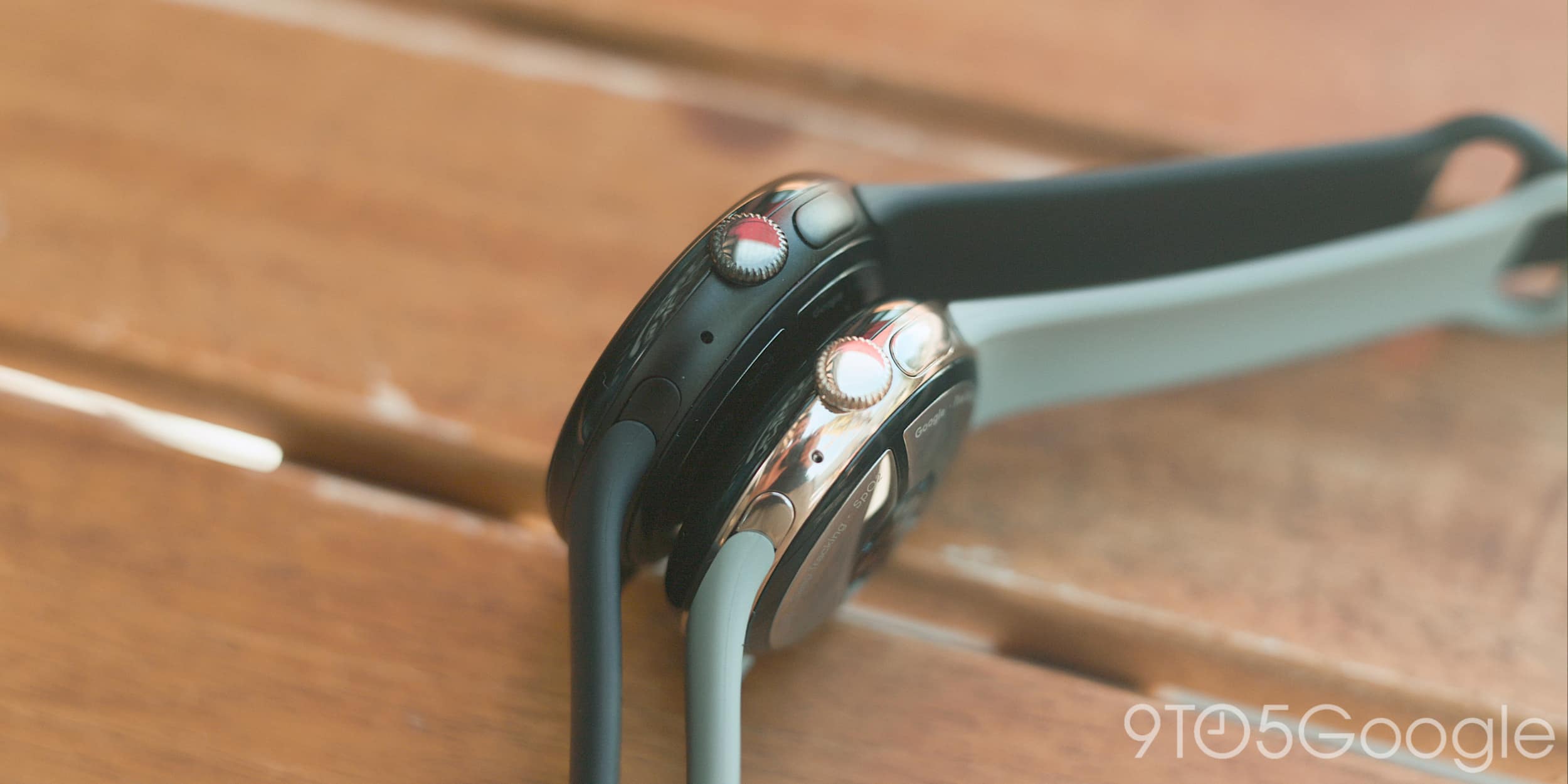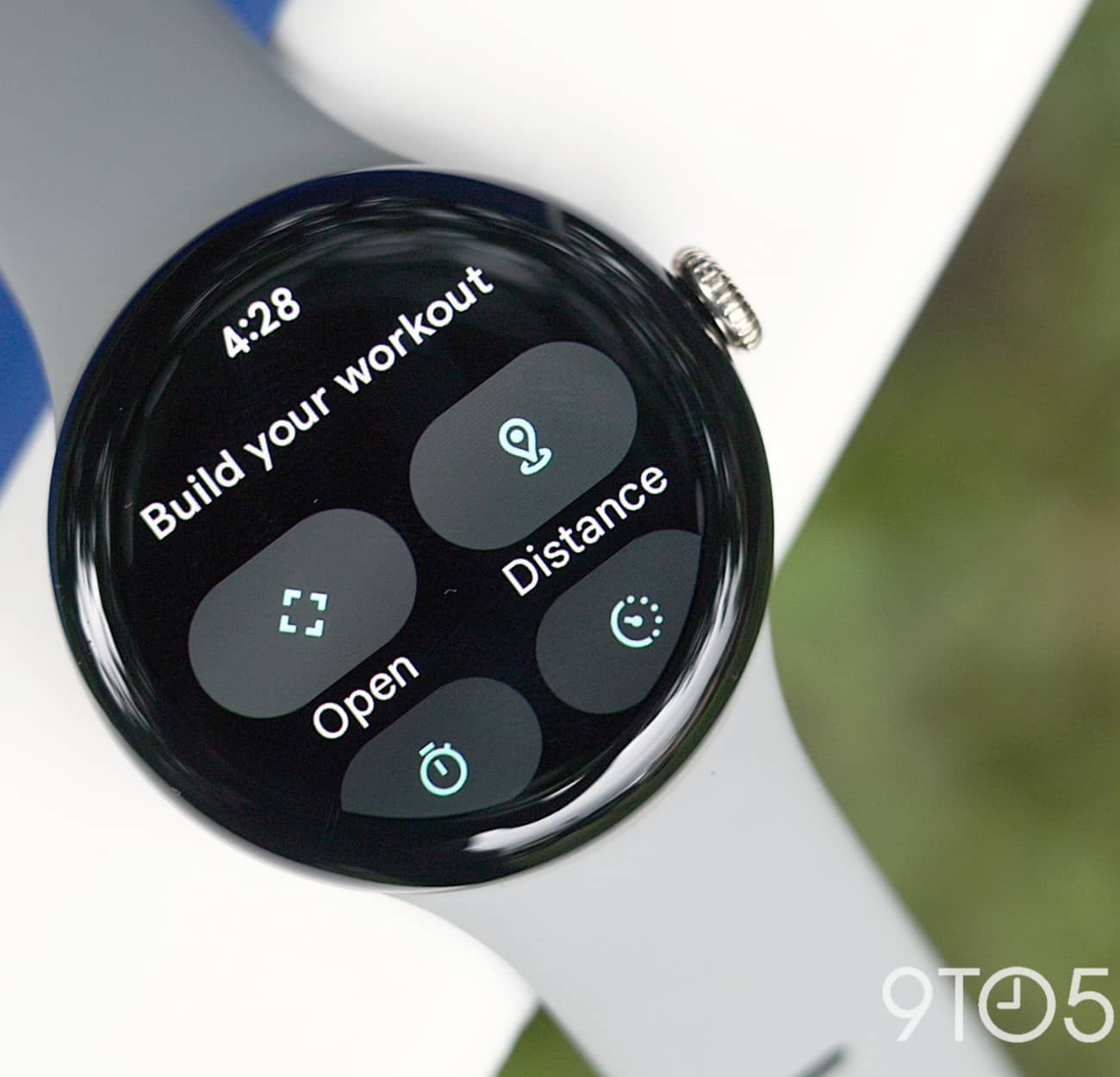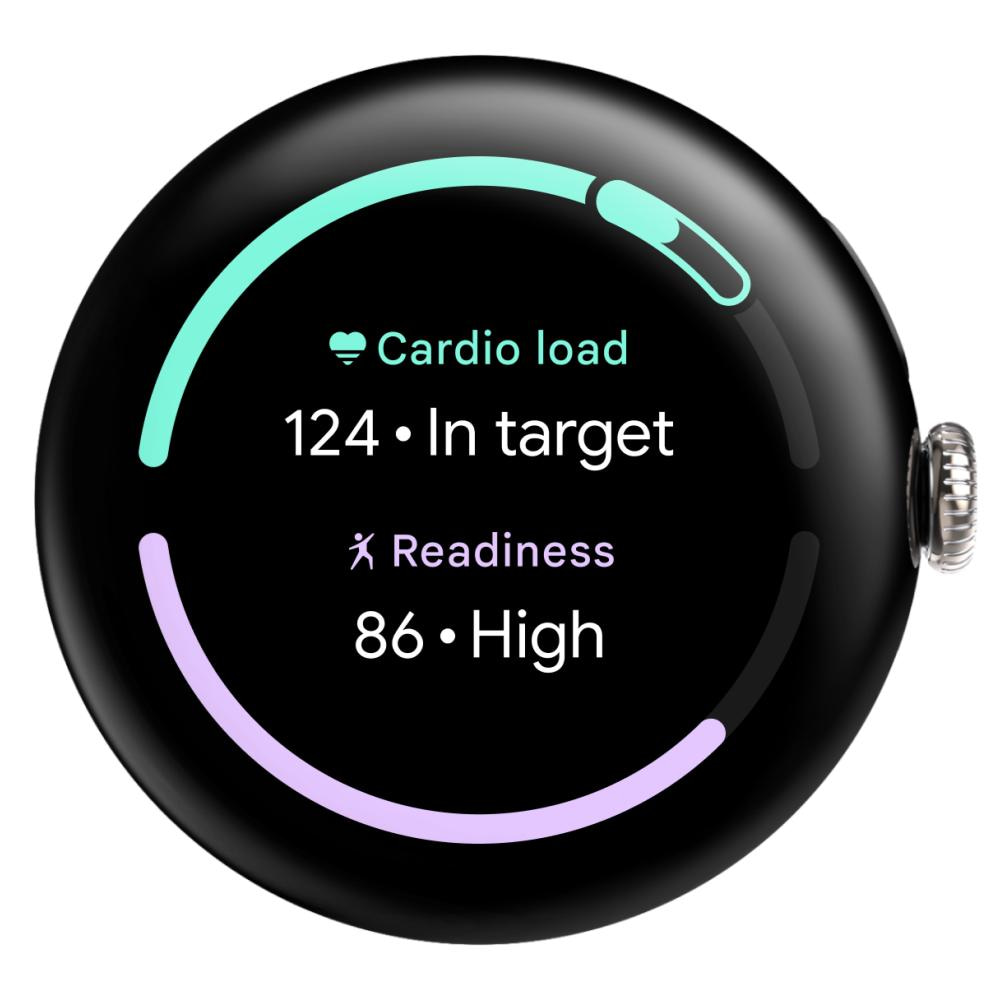As an avowed lover of small watches, Google’s decision to start at 41mm in 2022 has been ideal. However, towards the end of my time with the Pixel Watch 2, the thick bezels around the screen started to feel constraining and just plain old. The Pixel Watch 3 (41mm) came just in time to remedy that, while really emphasizing its Fitbit DNA.
Table of contents
Screen
Google’s decision to go circular with Wear OS 3 means that apps, which are mostly edge-to-edge lists, get cut off at the top and bottom. The bezels on the first two generations of the Pixel Watch don’t help and contribute to a binocular effect, especially in Google Messages and Gmail.
The Pixel Watch 3’s 16% reduction in bezels on the 41mm and subsequent 10% display size increase combine for a change that you will notice. It’s not drastic by any means, but it’s a good, long-awaited, and much-needed modernization.
There are a few places where I appreciate the slightly bigger screen, starting on watch faces. The default Active face is my favorite for comfortably showing the digital time and five circular slots, with the larger complication sizes in use needed as an upgrade on every other watch face. A “Plus” (versus the “Minimal”) configuration adds a ring of four Arc complications that look bad on the 41mm size as the numbers are hard to make out.


Wear OS Tiles can really take advantage of the bigger screen to show more glanceable information. Now that weather shows a 3 to 4-hour forecast, I’m opening the app less often and that’s a not insignificant time saver for me.
Unfortunately, the Gmail and Google Tasks Tiles are still limited to two items per screen. Even one more email or task would go a long way, so hopefully updates are en route. Being able to see more text per screen in notifications and apps round out the tangible benefits of the bigger screen.
Google brought the Actua Display to the Pixel Watch 3 and 2,000 nits peak brightness is slightly more apparent here than on phones. Something I’ve noticed is the always-on display going down to 1 nit in dark rooms. However, in dark-ish situations, it’s sometimes not bright enough, especially with tilt-to-wake disabled and when you don’t want to touch the screen. Last year’s dimness is more comfortable in these cases.

45 vs. 41mm
Outside of the display and bezel change, the physical appearance of the 41mm Pixel Watch 3 is unchanged from what came before. I’m partial to the polished silver aluminum case, but I quite like the 45mm’s matte hazel finish for being more lively than matte black.
Overall, I am still quite happy with the domed design, but — three generations in — I’m starting to wonder what the evolved end state of the Pixel Watch will be? The bezels that make up that perimeter are unavoidable, so what if they accept touch input to make a virtual crown? In this vision, the existing crown would go away for an unobstructed circular look.
Battery
Starting with last year’s model, I have experienced less battery anxiety — or worry about getting through the day on a single charge— about my watch than my phone. (And I do get through the day with my Pixel 9 Pro without a top-up.) With the Pixel Watch 2, I’d end my day near 30% sans exercise.
(As an aside, I’m more conscious about phone battery life due to the status bar percentage indicator. In comparison, I don’t have the Battery complication on my faces because the Pixel Watch 2 has always gotten me through the day on one charge, which completes before I go to bed each night. I’m so blasé about battery percentage that I’m sure I check it more frequently using the Pixel Battery widget on phones rather than swiping down for Quick Settings on my wrist.)
That lack of battery anxiety continues on the 41mm Pixel Watch 3. From 100% to when I charge before going to sleep, the wearable is worn 17-18 hours with the always-on display (AOD) and touch-to-wake enabled but tilt-to-wake off.
I get through my entire day and usually end up around 35% ± 5% on days I don’t exercise and 25% ± 5% when I do (45~ minutes of running with GPS connected and headphones paired).

Basically, I never hit the Battery Saver mode, which turns on at 15% and this year keeps tilt-to-wake on. Another example of Google doing more this year is how the Pixel Watch 3 always stays paired over Bluetooth to your phone even when off-wrist. On previous models, the radios disconnected after a few minutes, with Google telling us this behavior change provides a more consistent experience with no discernible impact on battery life.
You don’t notice the 1 Hz refresh rate but on paper it contributes to battery life, while Google credits Wear OS 5 as providing improved efficiency. On the 41mm model, charging is 20% faster year-over-year. That practically translates to the Pixel Watch 3 always hitting 100% before I’m ready to put it on again.
I do prefer the pin-based charger compared to wireless on the original, but I wish there was a bit more heft to it. Right now, the light puck and thin wire frequently slide off my nightstand.
The quest for multi-day smartwatch battery life is an admirable one, but I think people — thanks to phones — are conditioned to charge their devices every day. Even with 2-3 days of battery life, I imagine myself charging nightly just in case I forgot to on the third day. The big behavior change will come with week-long battery life, if we ever get to that point.
Software
The biggest change introduced by Wear OS 5 is the grid-based app launcher that saves you from scrolling. Android 14 is otherwise a quiet release for watches, and I’m still annoyed that Now Playing does not have an always-on display mode. Like the majority of apps on wrist-down, the playback controls blur while a small digital clock — please make this bigger — appears at the center. It would be nice if you had one-tap access to play/pause and skip/back.

Fortunately, Google makes it up on the first-party app front.
Pixel Recorder is now available on Wear OS. Compared to long-form transcription on phones, shorter voice memos are the clear use case with a Tile letting you quickly start one. The quality of the single microphone next to the crown is fine when you bring the Pixel Watch 3 somewhat close to your mouth. Recording quality suffers a bit when your wrist is down.







It’s delightful to see how the phone’s simple home screen layout translates over with full playback capability of what you’ve recorded using the watch’s speakers. From Recorder’s now playing screen, you can demo the new media output switcher in Wear OS 5 that shows your Bluetooth devices. Finally, you can have audio files sync to your phone for transcription or choose to keep everything local.
The Google Home app continues to get more powerful — while remaining straightforward — with a useful Google TV Remote that really emphasizes the versatility of Wear OS Tiles.
Call Screen in the Phone by Google app is now joined by “Ask to hold” to give you more time to answer, while the addition of a “Find My Phone” shortcut here is quite thoughtful. It’s those calling features that really justify the Gemini boot screen on this device that otherwise has Google Assistant.




Elsewhere, the additional screen real estate for the Pixel Camera viewfinder is an obvious boon, with the ability to control Astrophotography also nice. There’s also a shortcut to open the app at the bottom of the watch face when you launch the camera on your phone. Meanwhile, offline Google Maps is a nice comfort to have and puts the 32GB of onboard storage to use.

45mm
Watch Unlock is now powered by ultra-wideband (UWB). I personally had no issues with the Bluetooth version last year, but I’m not using it on the Pixel 9 Pro given the ultrasonic fingerprint sensor upgrade significantly reducing failures.
In terms of new watch faces, there’s the aforementioned Active that I’m, well, actively using. The color pairings this year can be quite stark. Field is a new analog watch face that spans from a Simple layout with no complications to Arcs with up to eight slots. It’s a bit too dense on the 41mm and better on the 45mm. Track is the third and final addition. It’s actually an update to an existing face that used a thick ring to show one metric. The new version can show up to two stats with a third circular slot. It’s more functional, but loses its simplicity and the ring is on the thin side.


Track & Field (45 vs. 41mm)
Run, run, run
I’m a simple runner that goes at it for 30 minutes straight without too much care about personal bests. I would track my workouts using the Exercise app and glance at the stats after finishing but that was it.
The Pixel Watch 3 can still be used that way, but the advanced running features provide a much more assistive experience.
It starts with a workout builder that’s available on both your phone and watch. The on-wrist creator is fine, but I’d recommend just using the Fitbit app version that can be accessed from the corner FAB > Build a run. You can enable/disable the Warm up and Cool down, with the customization starting from “Add interval.”


There are five goal types to choose from – Distance, Time, Energy burned, Time trial, and Open. That’s joined by the ability to set Current pace and Heart rate zone targets with audio and haptic cues (more on that later). You have the ability to repeat those intervals, as well as add rest periods between them.
The Fitbit app lets you quickly “Save and start on watch,” while the regular “Save” button is in the top-right corner. You can find all your “Custom runs,” with the ability to edit further, in the Coach tab as part of a new carousel. On the Pixel Watch 3, open the Exercise app > Run and tap the layers icon next to Start to see all of them.



These custom runs help you create a plan, with the simple act of structuring your workout already quite effective at making sure you stick to it. However, what felt like having a human coach was the live verbal cues during exercise.
Something as straightforward as having a voice tell me when it’s time to move to the next interval (with details about my split) or rest kept me in the flow compared to looking down at the screen. I found these prompts so compelling that I paired one Pixel Buds Pro earbud to the watch, while using a different earbud (from a separate pair) connected to a phone for music. (I prefer browsing YouTube Music on a bigger screen rather than using the Wear OS app, though the on-watch exercise stats screen now lets you access Now Playing controls by swiping left.)
Then there’s the prompt telling me when I’m behind pace and I should speed up or slow down (to not go too hard too early). These cues are dynamic and constantly update to keep your set pace, which can lead to prompts coming in quick succession about being out of and now in range. That can be annoying, but ultimately motivating enough.
Once you’re done with the workout, there are new form analysis metrics: Stride length, Step cadence, Ground contact time, Vertical ratio, and Vertical oscillation. Viewable in the mobile app, Fitbit provides personal ranges after 10 runs to track minute changes. There’s a gamification aspect, which isn’t inherently bad in this case, to getting the perfect form, but I don’t think it’s for most people.



The new stat I do appreciate is a Cardio Load that tracks exertion during both everyday activity and workouts. This numerical score updates/increases throughout the day. After 14 days, Fitbit will show a personalized Target Load that shows “how much you can push each day,” while not going overboard. As the name suggests, the fact it gives you something personalized to aim for is interesting. You can set whether your fitness target is to improve or maintain cardio fitness. It takes into account recent Cardio Load and your Daily Readiness Score, which is now free and no longer behind Fitbit Premium. There’s a nice “Readiness and Load” Tile that efficiently shows this information on your wrist.
The technology behind this advanced running feature, along with speech-to-text, is really quite simple, but the end result is a coach-like experience that most people don’t have access to outside of trainers and competitive sports. I used to participate in the latter with a coach telling me when to go harder every lap. Live feedback —- through whatever voice — in these environments is extremely motivating and appreciably different from looking at reading something on your watch after a buzz.
You’re the one that set the goal, but there’s something about having it parroted back to you by a different voice that might drive you to complete it with a bit more vigor. All this taps into how it does not take a lot for humans to personify computers that converse with them verbally, like smart speakers.
I think Google nailed the coaching basics on the Pixel Watch 3, but what comes next with AI-generated text that’s spoken aloud will really upgrade the experience and give it the veneer of even more personalization. How Google takes this to the next level is obvious. The text-to-speech voice is quite basic and sounds nowhere near Gemini Live, while the messages themselves are dry and generic. Something richer — with the optimization to customize how chatty/long messages are — could make it seem like you have a live coach when running.
Final Thoughts
Over the past three weeks, I’ve kept the 41mm Pixel Watch 3 on my wrist at all times. It was the unit signed into my Fitbit account (multi-device support would be great), though I’d dual-wield the 45mm for a few hours every day. The bigger screen is really nice for content, but the smaller size got just big enough where the difference isn’t as drastic as the PW2. As such, I think I’m sticking with the 41mm Pixel Watch 3 this year.

The 45mm variant steals the show this generation, but Google continues to iterate on the 41mm Pixel Watch 3 in meaningful ways. It’s an obvious upgrade for original Pixel Watch owners, while I think heavy app users on last year’s model will appreciate the slightly bigger display.
I’m very bullish on the running features. Today, they provide a guided experience that a lot of people can already get value out of. If Google keeps iterating, it could be a personalized coach on your wrist.
The Pixel Watch 3 is available today:
FTC: We use income earning auto affiliate links. More.

Comments